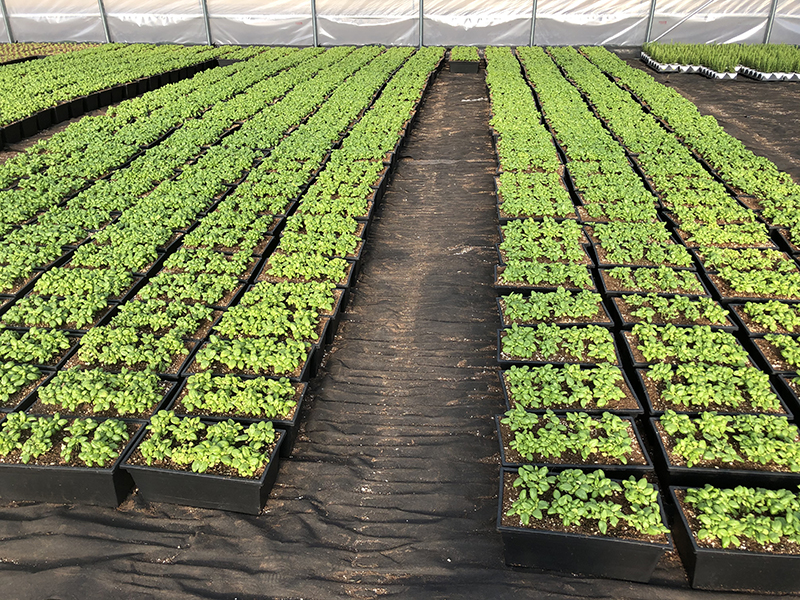Researchers in Canada Tackle Retention Pond Management

Through sampling and analysis of water from different retention pond types and sizes, project managers hope to develop realistic and applicable management recommendations for greenhouse growers. Photo: Nathan Warkentin, Ontario Greenhouse Vegetable Growers
Retention ponds can play an important role in helping greenhouse growers manage stormwater. It’s not clear, however, how they influence water quality as the water flows from roof to pond and, ultimately, to surrounding watersheds.
To address this, Ontario Greenhouse Vegetable Growers (OGVG) launched a project supported by the Canadian Agricultural Partnership, with researchers from the Great Lakes Institute for Environmental Research (GLIER) at the University of Windsor, to close some of the knowledge gaps around these ponds.
“Supporting innovation to grow the agriculture sector in a sustainable fashion is a priority,” says Lawrence MacAulay, Canadian Minister of Agriculture and Agri-Food. “This investment is a great example of how the Canadian Agricultural Partnership gives farmers the tools they need to feed Canadians while protecting our environment.”
“Our government supports this collaborative project to help greenhouse growers implement sustainable nutrient management practices,” Ernie Hardeman, Ontario Minister of Agriculture, Food, and Rural Affairs, also says.
One of the goals of the research, according to Nathan Warkentin, OGVG Energy & Environment Analyst, is to learn whether these ponds enhance nutrient retention or contribute to nutrient load in surrounding watersheds — and whether sediment in the ponds serves as nutrient sources or sinks.
“With comprehensive recommendations being made available through this project, we plan to provide a toolkit for growers to enable them to maintain or improve stormwater quality in a cost-effective and efficient manner,” Warkentin says. “By providing targeted solutions, growers should achieve both environmental and economic benefits.”
Through sampling and analysis of water from different retention pond types and sizes, a phosphorus assessment will be developed focusing on Leamington, Ontario, tributaries like Sturgeon Creek. The area is home to the majority of Ontario’s greenhouse vegetable producers.
“We are working with four greenhouse vegetable growers representing 18 stormwater retention ponds,” Warkentin says. “The various ponds represent a spectrum of design characteristics and ages that we are interested in understanding more thoroughly through this project.”
“We’ve gotten very good in our lab at diagnostically looking at shifts in microbial systems in healthy versus stressed environments,” adds GLIER’s Dr. Christopher Weisener. “Coupled with our work on stable isotopes, it lets us look very specifically at what types of cycles and chemical transformations are happening and compare the impact of current pond systems with those used 15 or 20 years ago.”
Last year, the team completed a sampling blitz of key parameters across each of the ponds. This year, team members are doing a deep dive on six or seven representative ponds to provide a more robust analysis, Warkentin says.
By the end of the two-year project, the goal is to be able to develop realistic and applicable management recommendations for greenhouse growers that will help reduce phosphorus pressures on nearby waterways. Currently, blanket recommendations exist, but strategy development for the different pond types will be very valuable for the sector, according to Warkentin. Not only will it help growers improve their environmental performance, but there could be economic benefits, too.
The project is eligible to receive $140,000 in cost-share funding through the Canadian Agricultural Partnership.
This project was funded in part through the Canadian Agricultural Partnership, a federal-provincial-territorial initiative. The Agricultural Adaptation Council assists in the delivery of the Partnership in Ontario.









